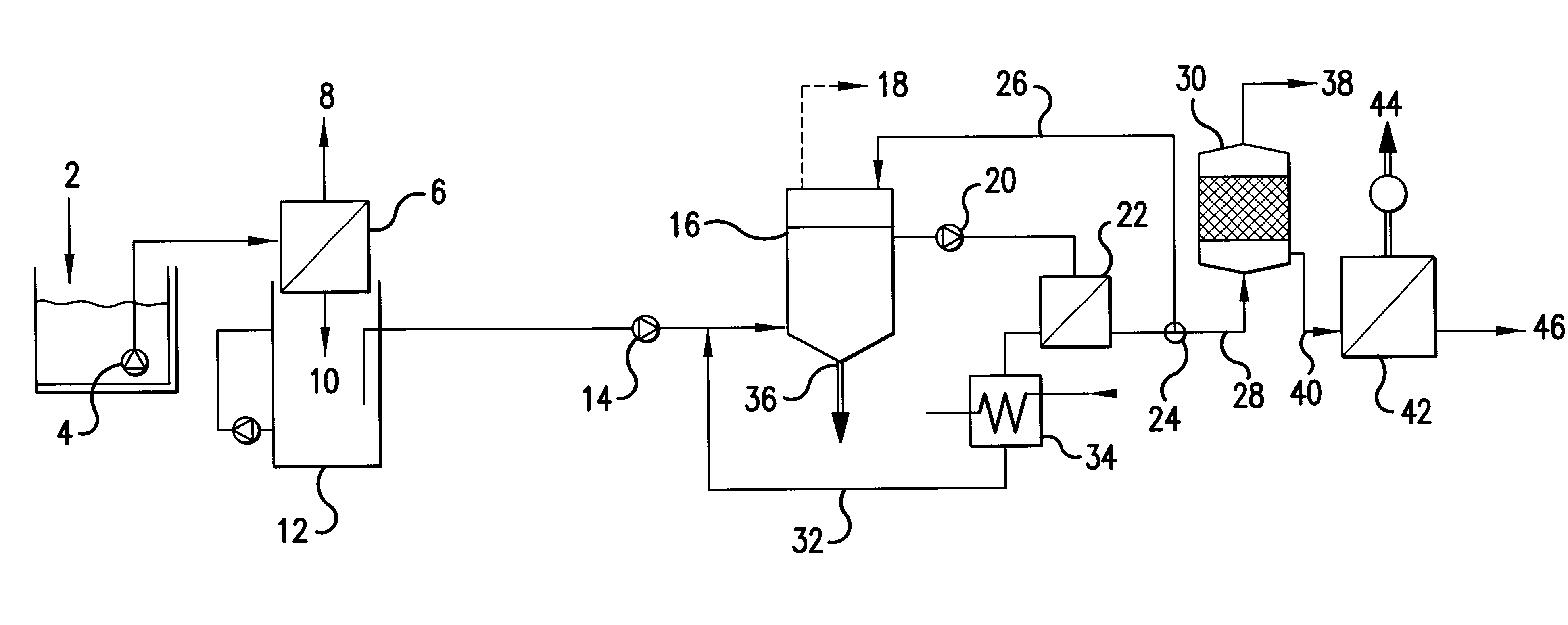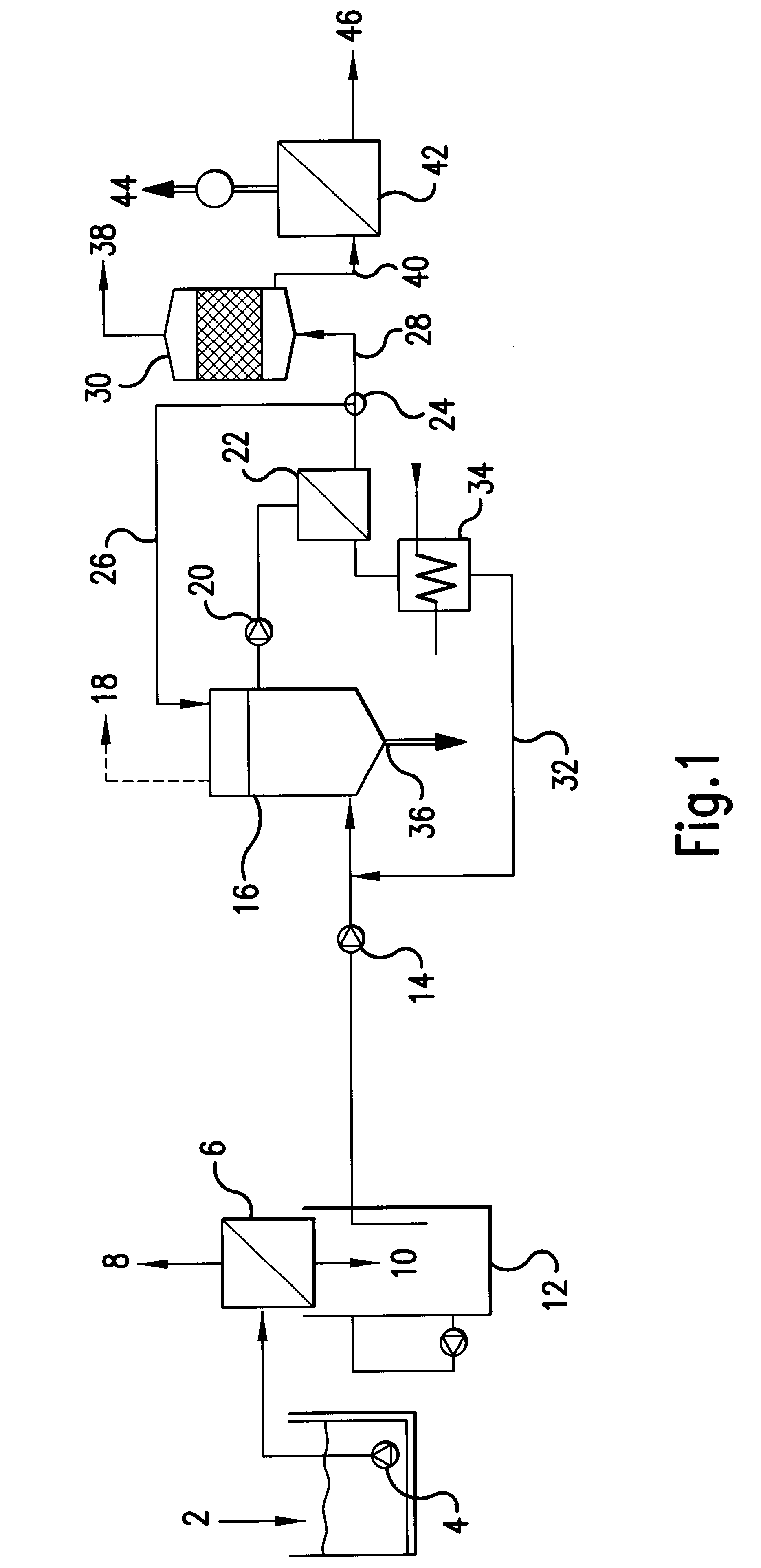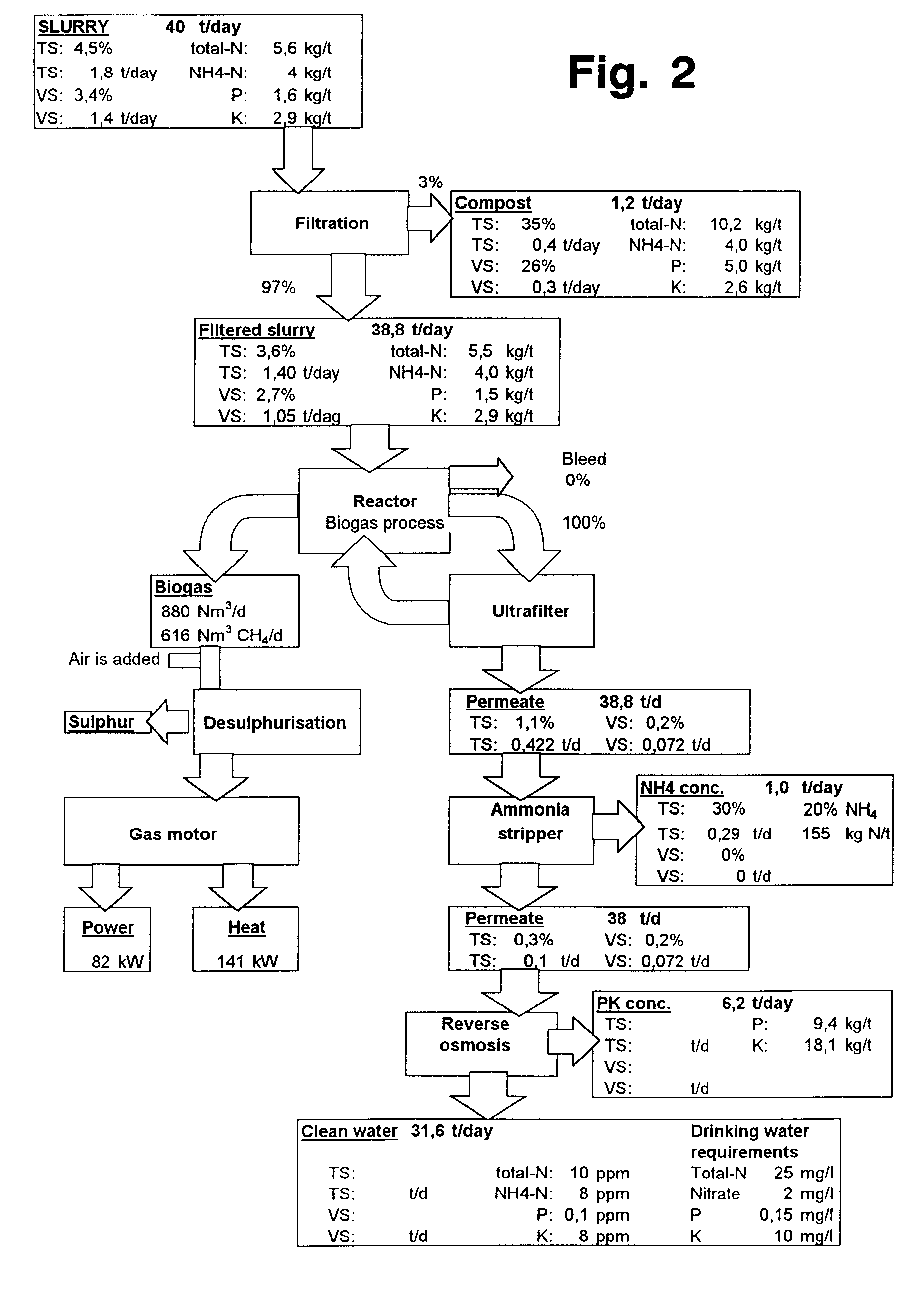Method and plant for the treatment of liquid organic waste
a liquid organic waste and treatment method technology, applied in the field of liquid organic waste treatment methods and plants, can solve the problems of large amount of liquid manure that can represent a serious environmental problem, inability to treat this type of liquid organic waste technology in the past, negative environmental effects of intensive livestock production, etc., to improve the internal environment of stalls, reduce environmental impact, and improve the use of various components
- Summary
- Abstract
- Description
- Claims
- Application Information
AI Technical Summary
Benefits of technology
Problems solved by technology
Method used
Image
Examples
Embodiment Construction
plant as described above and comprising the following components has been in use on a pig farm in Denmark for a period of 6 months:
a pre-treatment unit for removing fibrous and particulate material greater than 1 mm ("SWEA separator", available from Swea A / S, Denmark)
a buffer tank,
a biogas reactor with a volume of about 240 m.sup.3, operating at a temperature of about 35-37.degree. C.,
a desulphurisation unit for removal of hydrogen sulphide from the biogas,
an ultrafiltration unit employing a tubular ultrafilter with a diameter of 12.5 mm and a cut-off point of about 20,000 Dalton (obtained from Membratek, South Africa), with a flow through the unit of about 50-70 m.sup.3 / h,
an ammonia stripper similar to that described in EP 0494154-A, comprising a compression evaporator to result in a reduced pressure of about 0.5 bar and a permeate temperature of about 75-80.degree. C., and
a spiral reverse osmosis membrane unit arranged in a tapered configuration, with membranes of the polyamide b...
PUM
 Login to View More
Login to View More Abstract
Description
Claims
Application Information
 Login to View More
Login to View More - R&D
- Intellectual Property
- Life Sciences
- Materials
- Tech Scout
- Unparalleled Data Quality
- Higher Quality Content
- 60% Fewer Hallucinations
Browse by: Latest US Patents, China's latest patents, Technical Efficacy Thesaurus, Application Domain, Technology Topic, Popular Technical Reports.
© 2025 PatSnap. All rights reserved.Legal|Privacy policy|Modern Slavery Act Transparency Statement|Sitemap|About US| Contact US: help@patsnap.com



